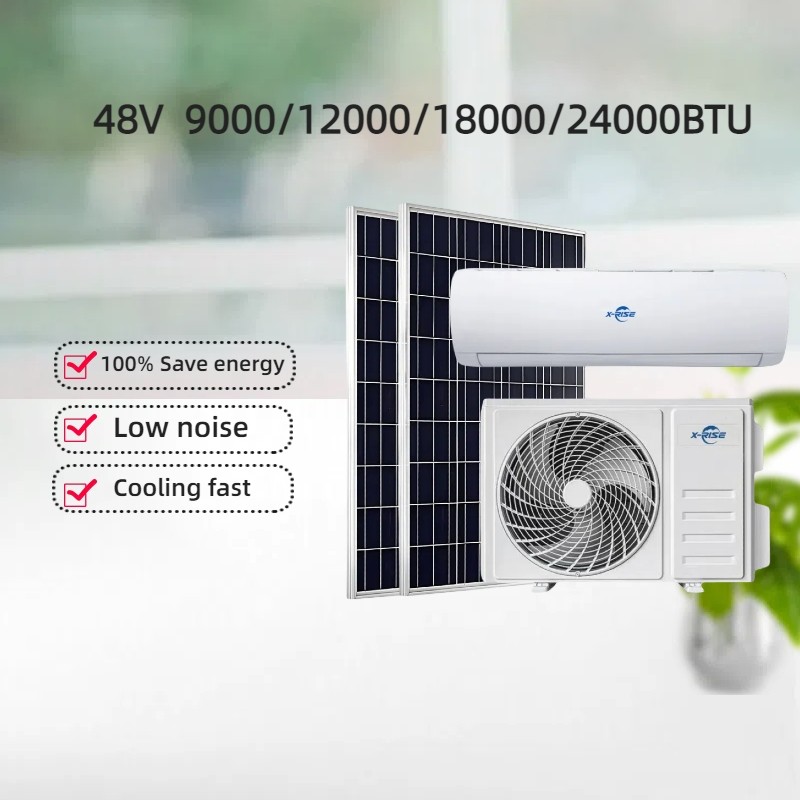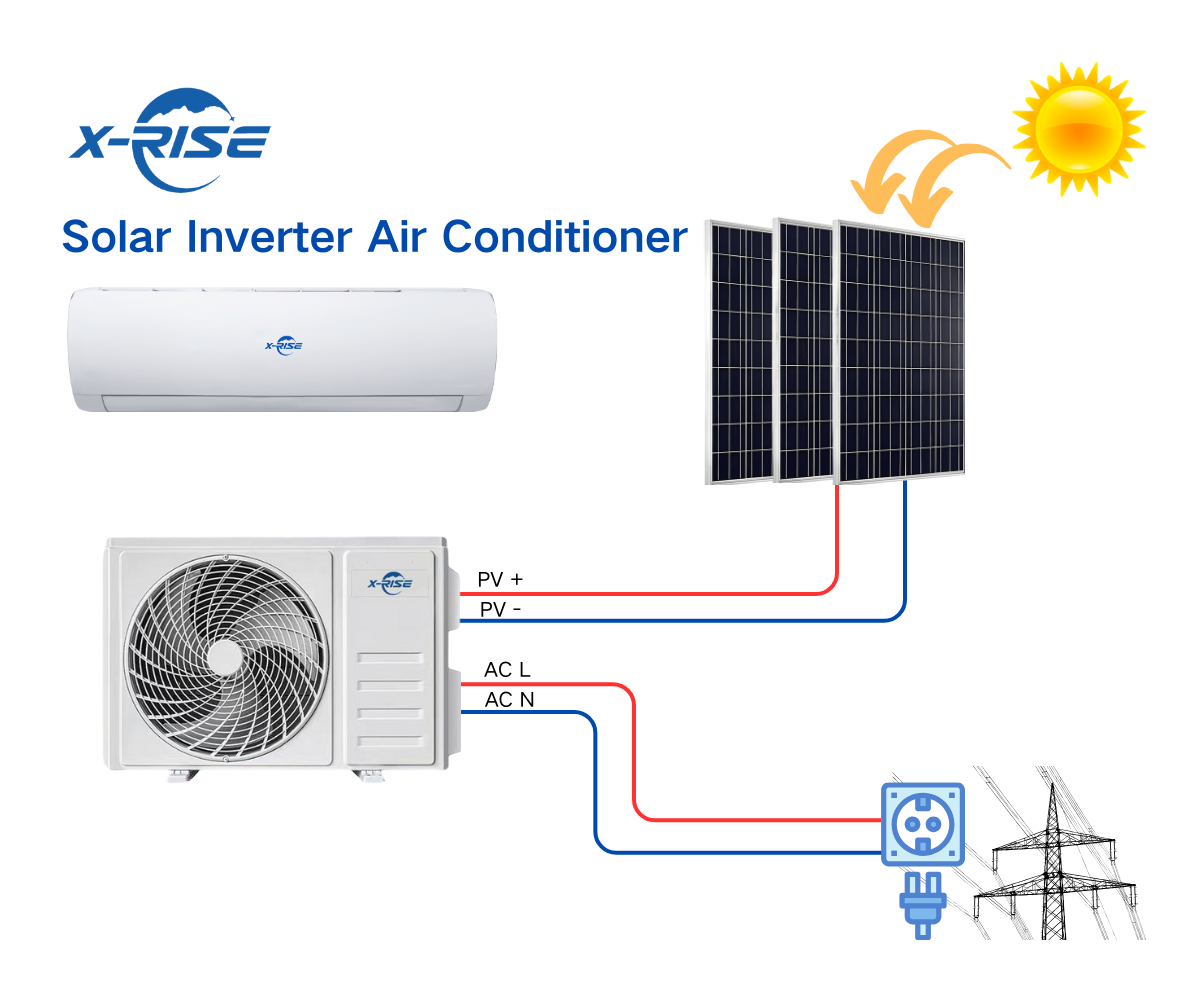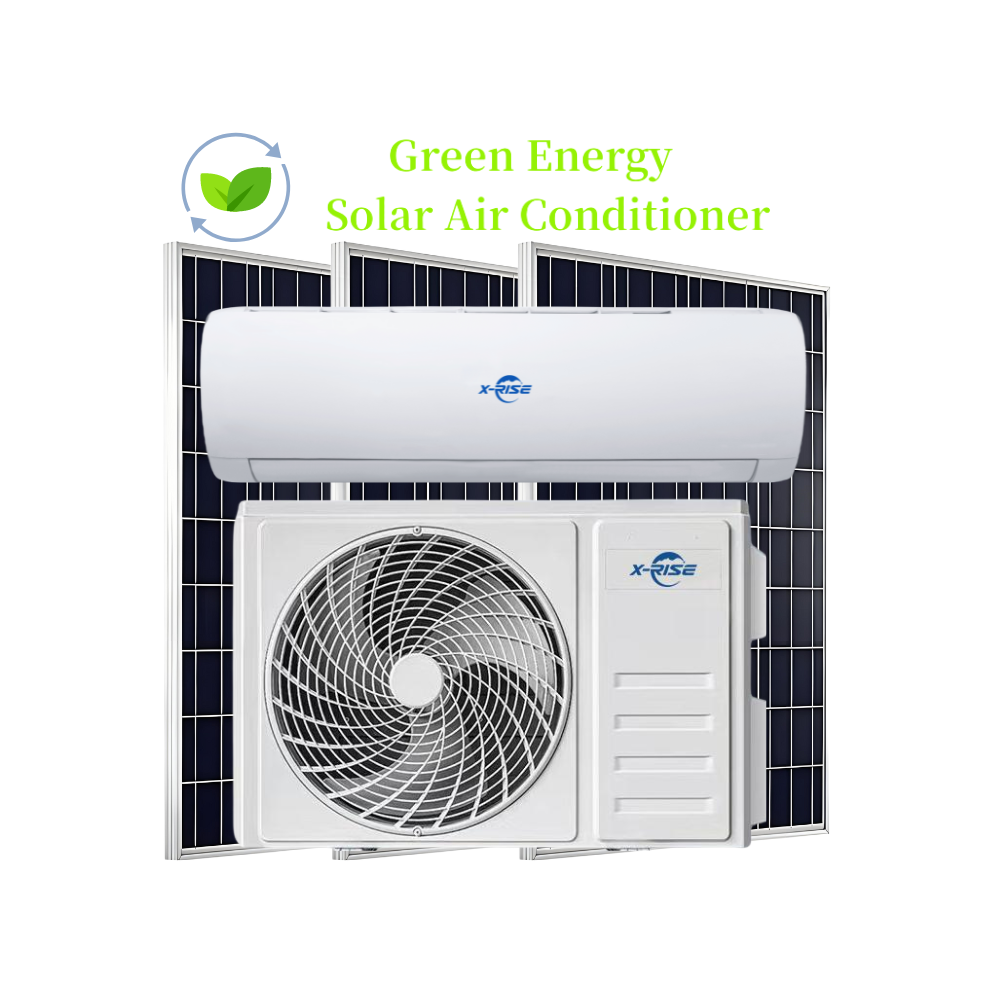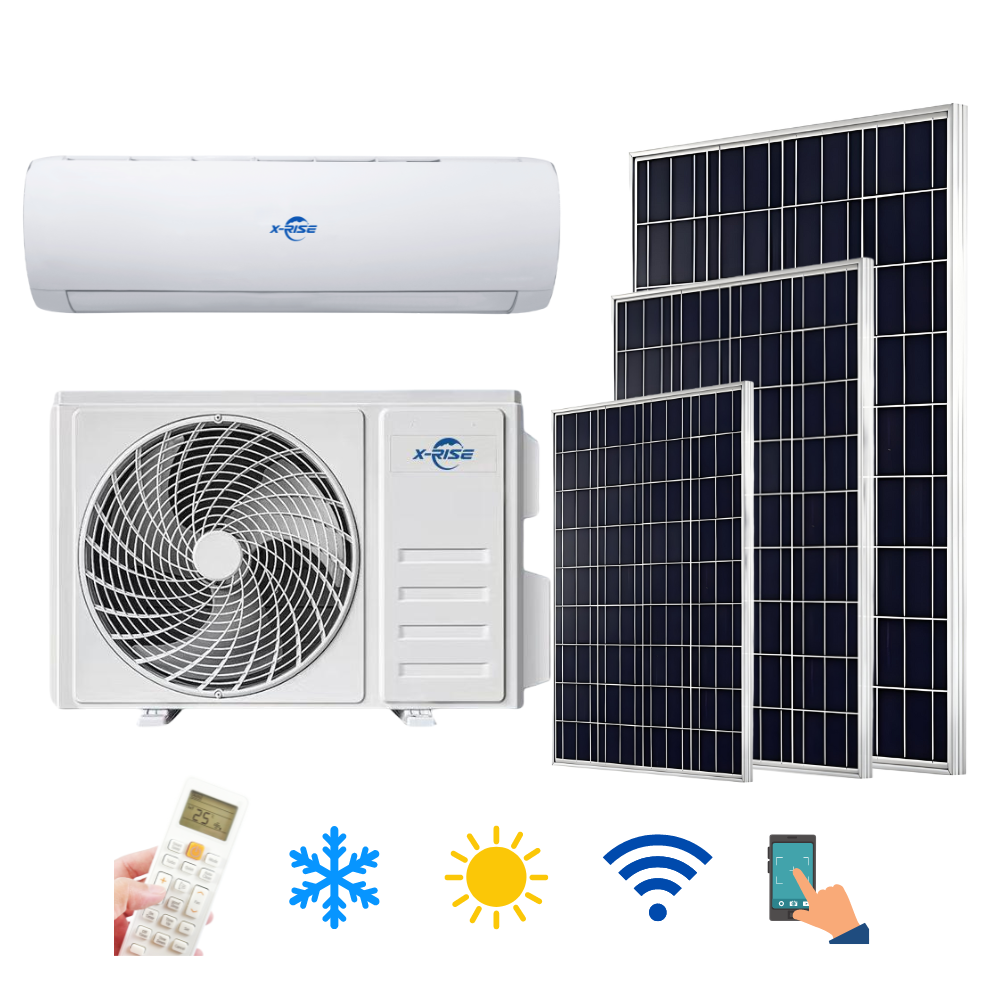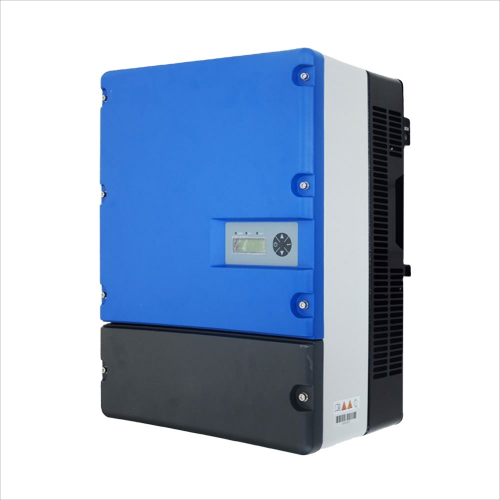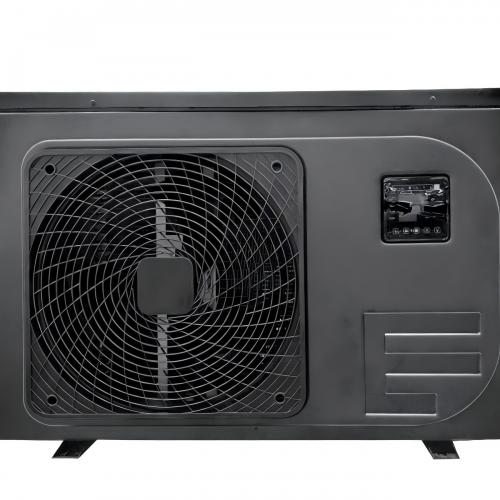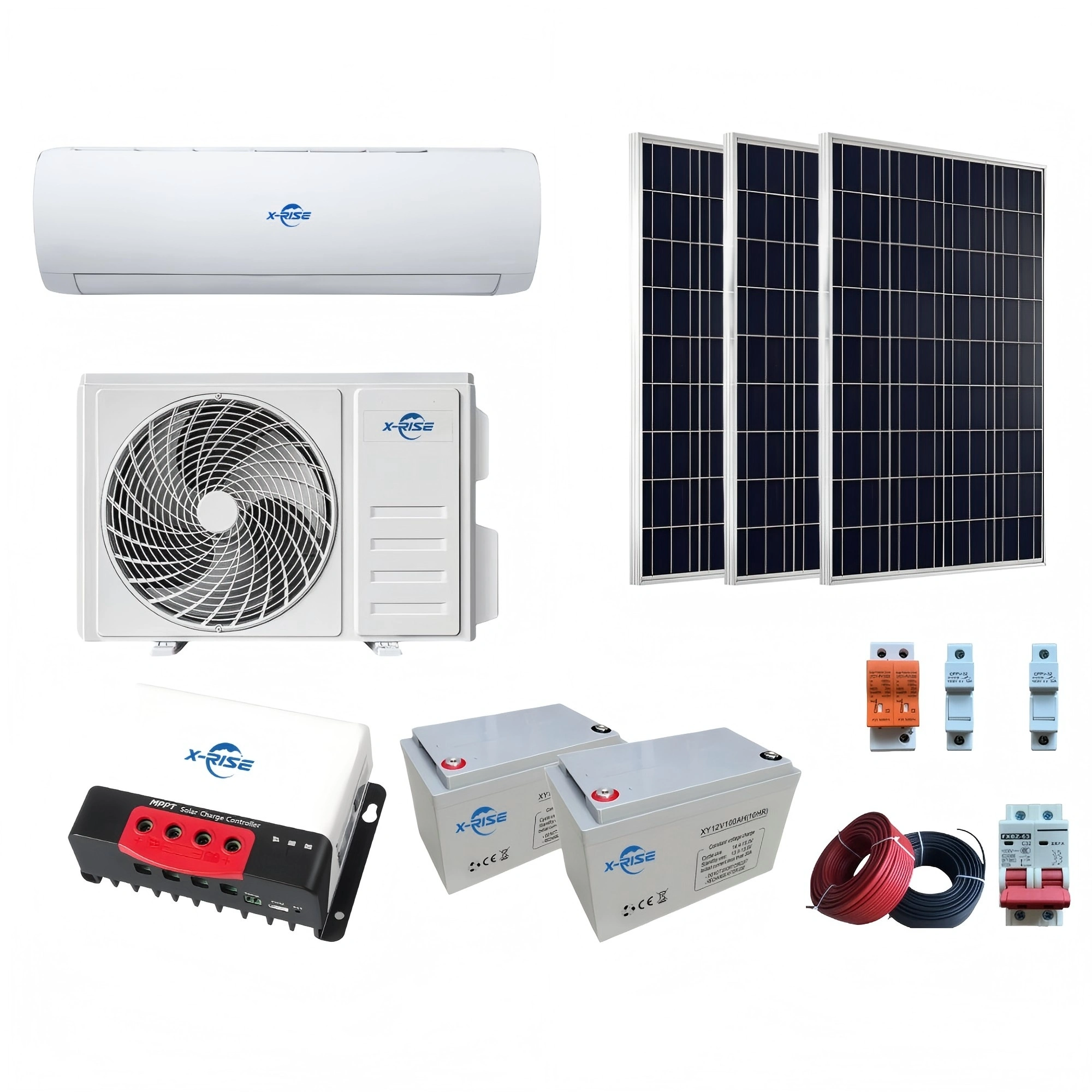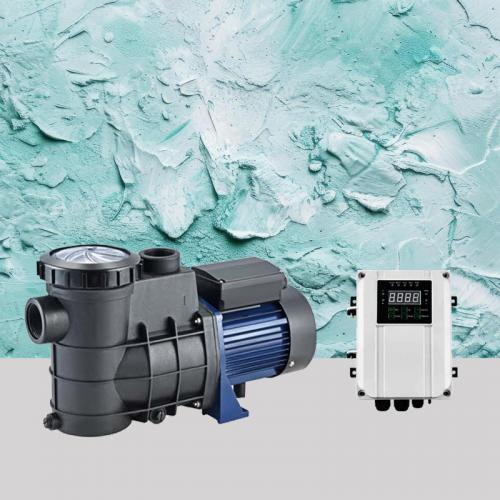Solar Hybrid Air Conditioner Introduction
Xrise 4th generation hybrid ACDC solar air conditioner works with solar panel unstable DC power directly from 7am to 17pm day time with power minimum 300w, no need solar inverter, no need grid power, no need battery. Rainy day, it will works mix power AC+DC and priority from solar power. At night, it automatically get grid AC power same as DAIKIN high efficiency normal inverter air conditioner. The unit with WiFi function can be controlled anywhere through WiFi or Bluetooth, and App with DC power meter and AC power meter, you can fully check how much energy saving or using energy through APP smart power meter function.
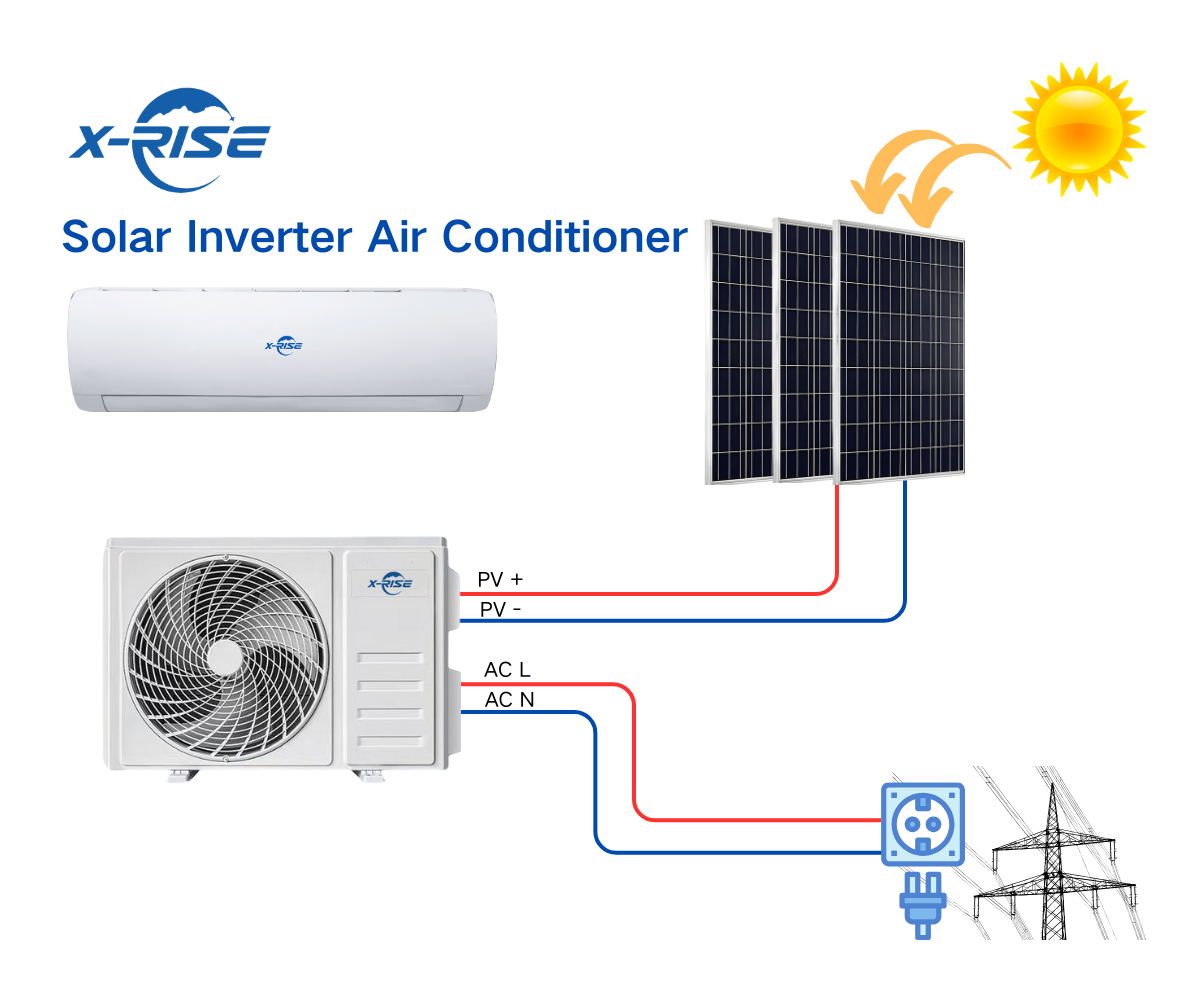
Core Technology:
1.Low power consumption and high energy saving efficiency;
2.All DC:dc compressor, dc motor , dc valve;
3. Variable speed air compressor to achieve the soft start and quick cooling / heating;
4. Wider working frequency range and DC working voltage range;
5. Smooth running with low noise level;
6. The working voltage for off grid solar air conditioner system is 48V DC which is easy to configure the system.
7. T3 Tropical 58 degree working;
8. APP control and power saving indicator are optional.
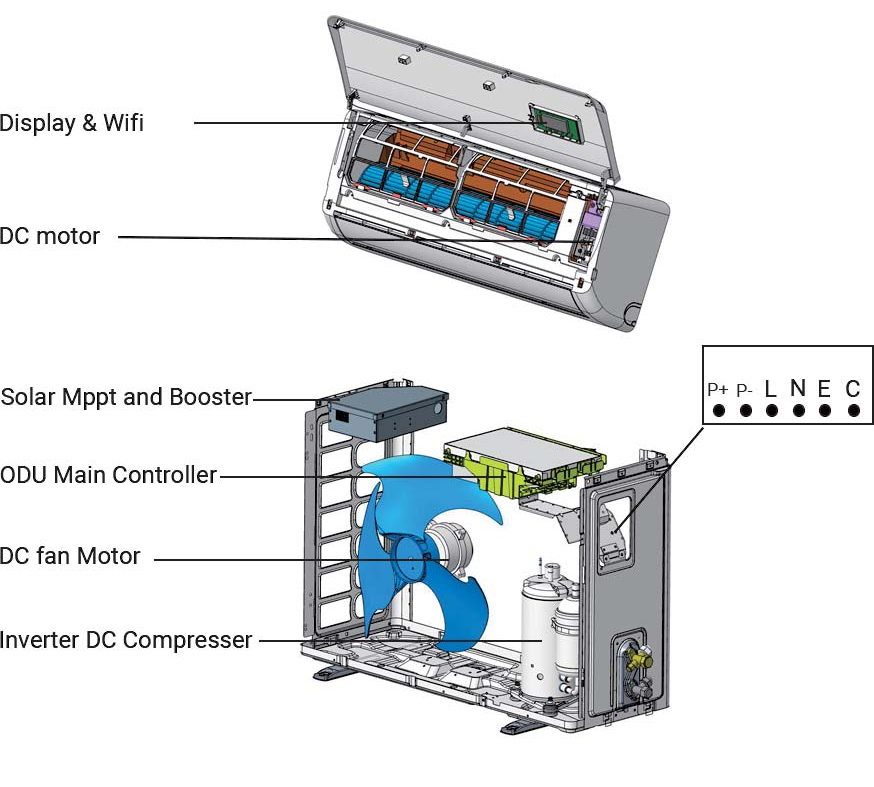
Xrise havs own 180°sine wave DC inverter controller technology for inverter air conditioner, “SVPWM” which makes the compressor ran at low frequency below 0.1Hz, improve the utilization of the DC compressor by 13% compared with 120 DC inverter controller technology. By 32% compared with Non-inverter air conditioner.
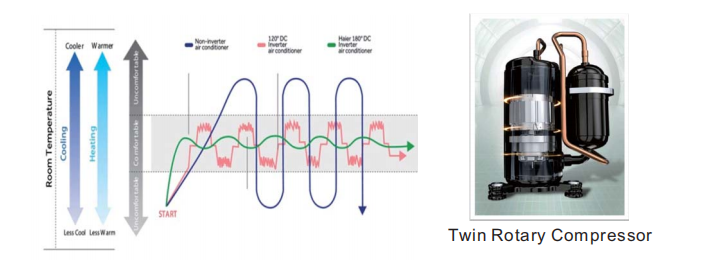
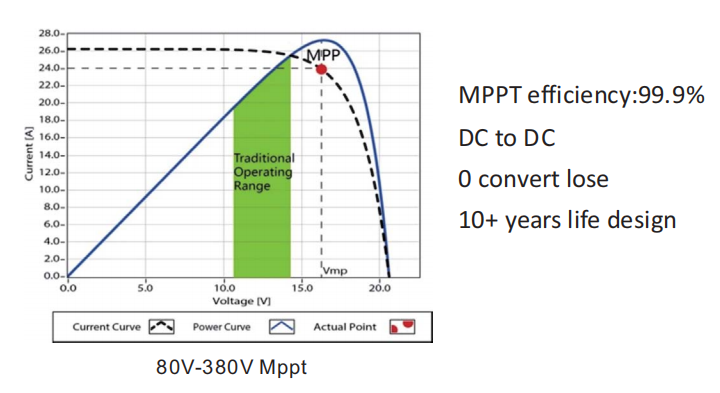
Solar Panel Recommend And Cables Connection
All Xrise ACDC models use DC compressors and other components (DC motors, DC fans, DC valves, ect.). While Inverter Air Conditioners are more powerful and use less energy than a fixed speed air conditioner, Xrise new Solar Hybrid Inverter takes this to a new level of efficiency. The world’s first true Solar Hybrid air conditioner allows you to convert the solar energy through Photovoltaic solar panels into DC power feeding directly into the DC compressor. The combination of the Solar Hybrid technology coupled with variable DC compressor means you and your family can enjoy the benefits of better temperature control, lower noise levels and now increased energy efficiency.
Xrise ACDC HYBRID SOLAR INVERTER AIR CONDITIONER embraces Solar DC and UTILITY AC as hybrid power input. This unique technology requires no inverter, no batteries, no controllers. Just plug in the solar panels to start saving up to 97% ~100% cooling or heating costs during the daytime! energy efficiency.
Using Xrise DC Power Supply Control Module, the ACDC Hybrid units can use Solar DC power or AC city electricity, or a combination of both as required. This means that no matter the weather is, you will have uninterrupted comfort. The system will use as much solar energy as is available and this solar energy directly replaces the equivalent amount of AC power from the mains provider. Under optimum conditions, this can save up to 97% of your mains power usage.
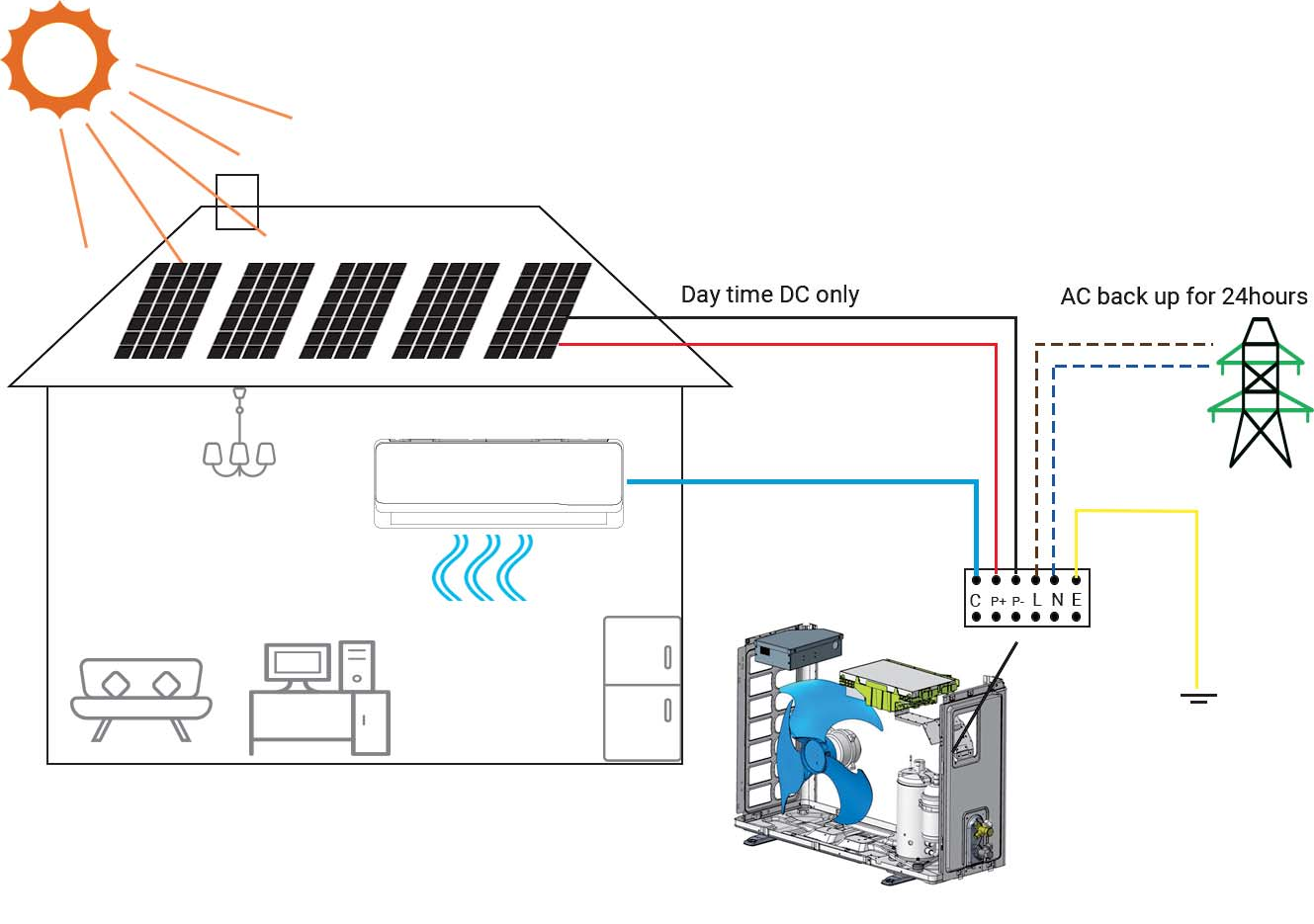
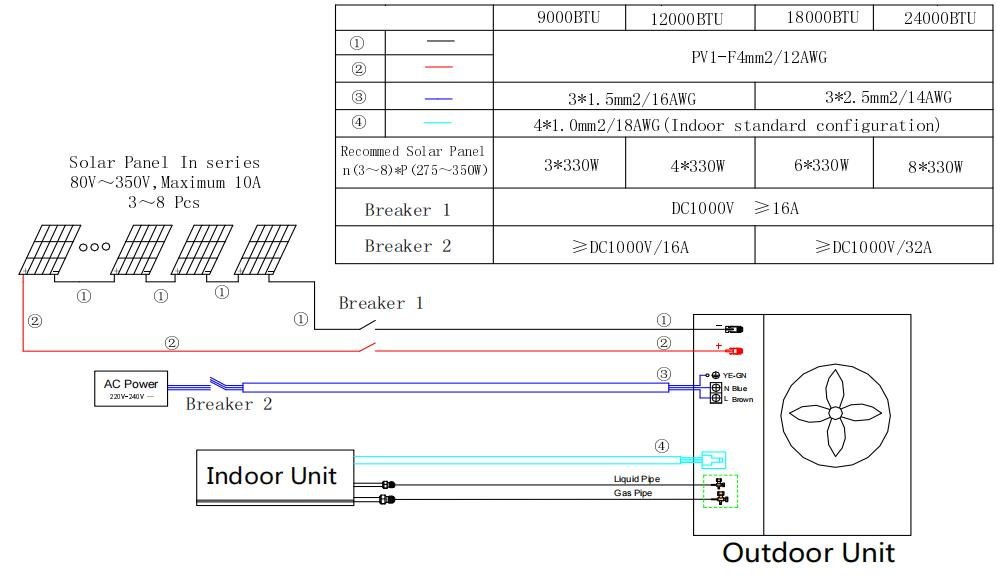
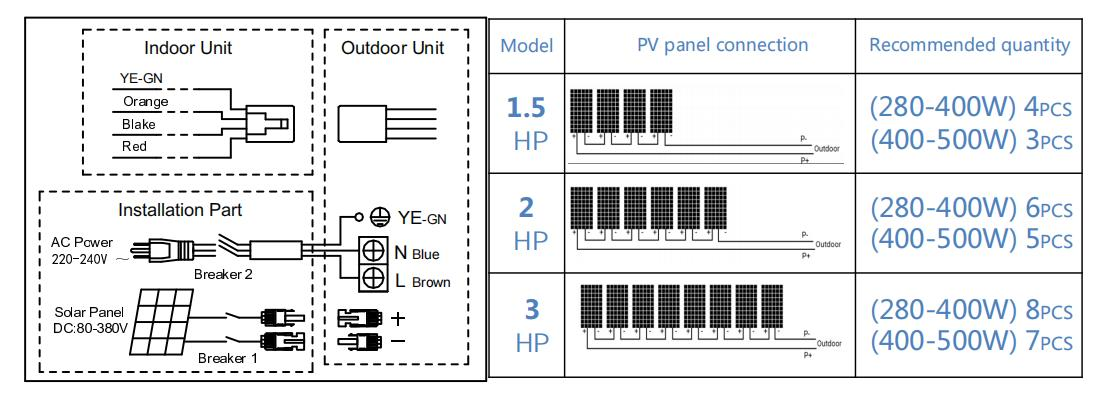
XRIACDC12000-V1 Datasheet
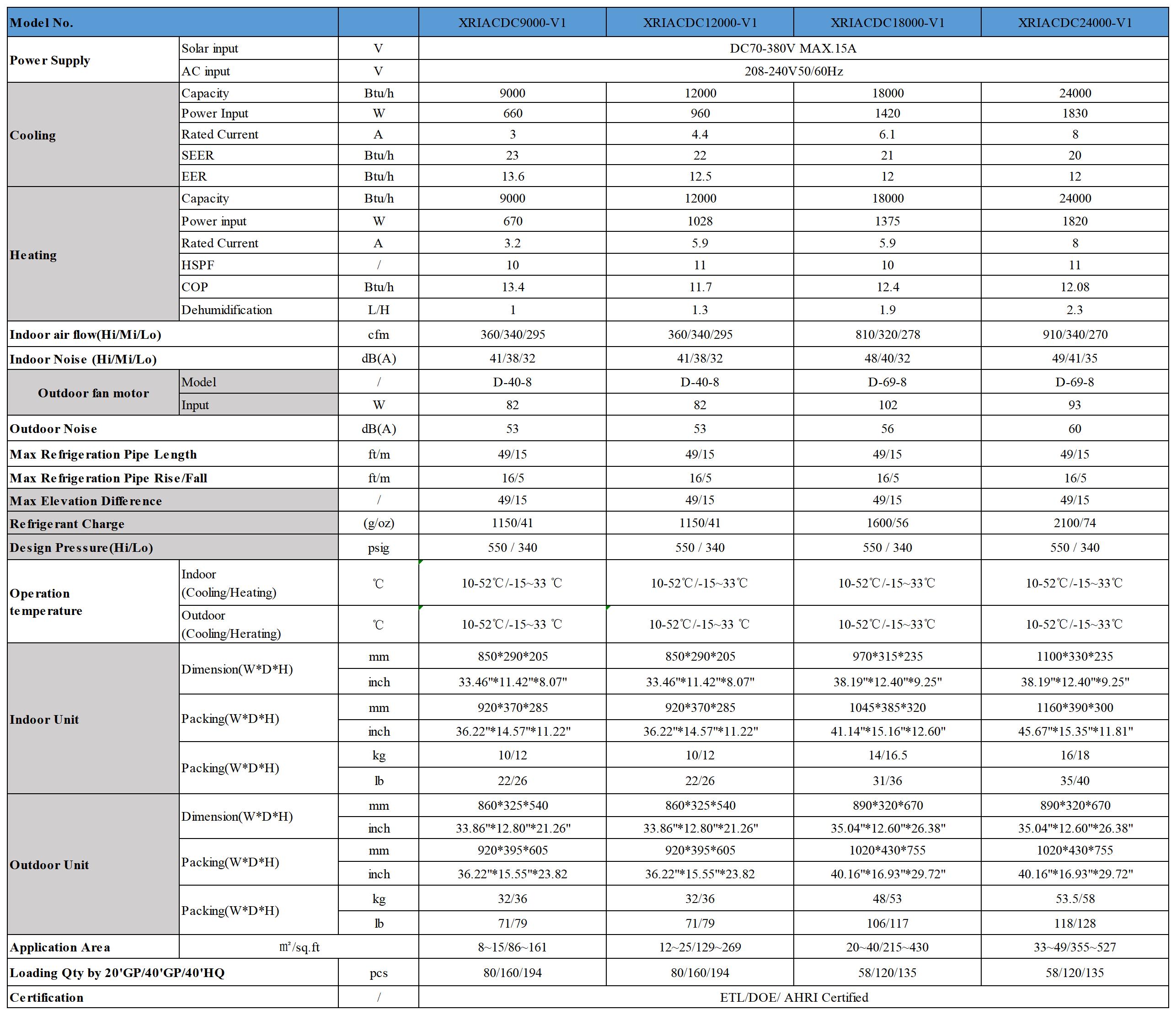

Certification:CE CB GCC
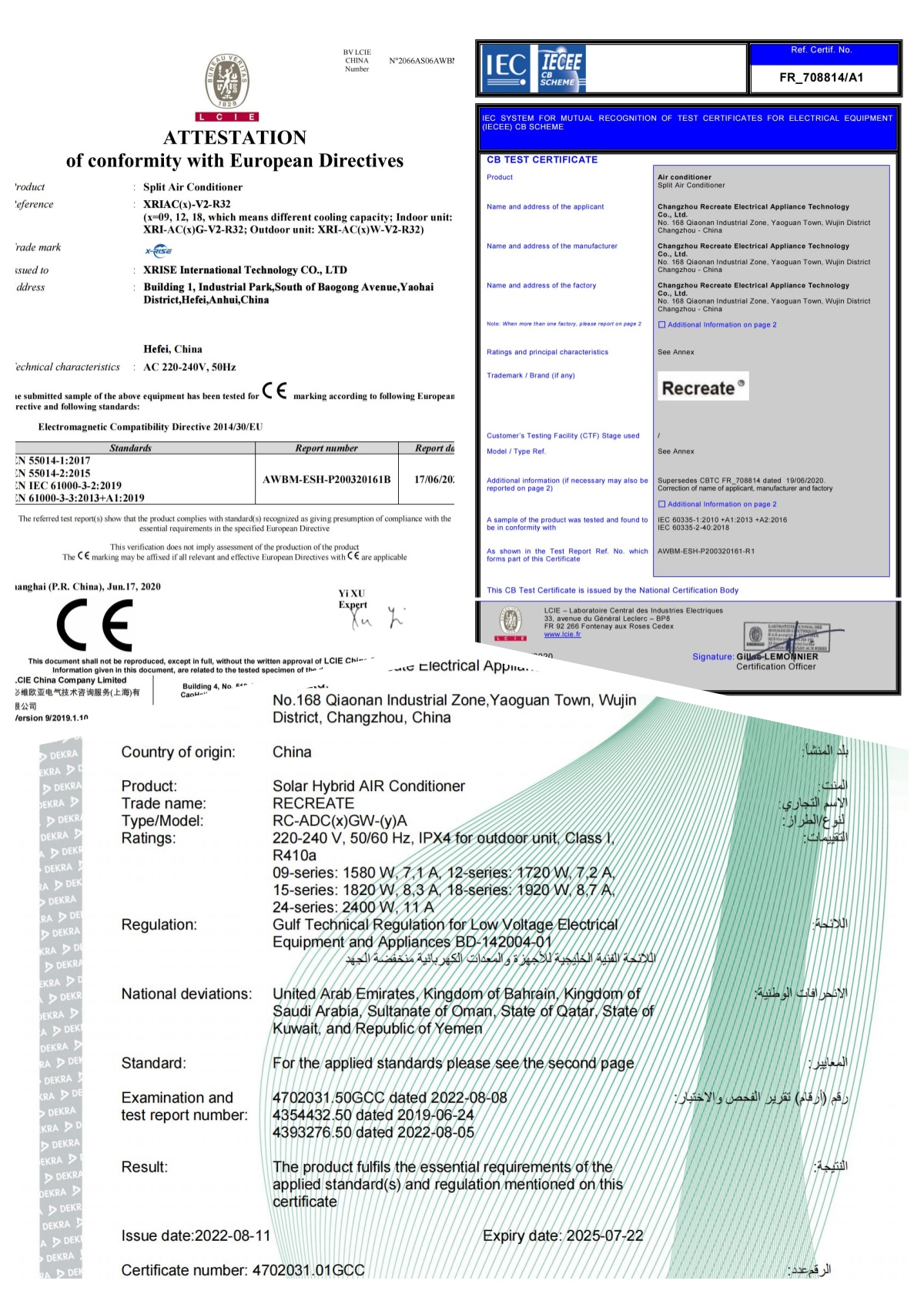
Application
1. Residential and family scenes
Solar powered air conditioning is especially suitable for home scenarios, especially in sunny areas. By installing solar panels on the roof, households can achieve self-sufficiency in their air conditioning systems, significantly reducing electricity bills. For example:
Rural self-built houses and urban villas: due to poor power grid stability in rural areas, solar powered air conditioners can operate independently; Urban villas improve energy self-sufficiency through solar system36.
Energy saving and comfort: solar power generation is used to directly drive air conditioning during the day, and energy storage batteries are used to power it at night to achieve all-weather stable operation and reduce the dependence of traditional power grid 17.
2. Commercial buildings and office buildings
Commercial buildings are an important application scenario for solar air conditionering system, and their high energy consumption characteristics are highly compatible with the energy-saving advantages of photovoltaic systems:
Large shopping malls and office buildings: Use a large area of the roof to install photovoltaic panels, generate electricity during the day directly for air conditioning use, reducing peak electricity costs. For example, a commercial building saves 40 to 60 percent of its electricity costs through solar air conditioning.
Green certification and brand image: comply with green building standards (such as LEED), enhance the environmental image of the company, and attract sustainable customers.
3. Remote areas and areas with unstable power
In areas with inadequate grid coverage or unstable power supply, photovoltaic air conditioning provides a reliable solution:
Islands and rural areas: Complete off-grid operation through photovoltaic + energy storage systems to solve traditional power supply problem13.
Emergency and temporary scenarios: such as temporary event venues, site camps, etc., solar air conditioners do not need to rely on the power grid, rapid deployment and low maintenance costs.
4. Public facilities and institutions
Public facilities due to long-term high energy consumption needs, solar air conditioning system can significantly reduce operating costs:
Hospitals and schools: hospitals need 24 hours of stable temperature control, photovoltaic system combined with energy storage to ensure uninterrupted operation; The school uses a large area of the roof to install photovoltaic panels to reduce electricity bills and serve as a new energy education case 267.
Transportation hubs and parking lots: airports, high-speed rail stations and other installation of photovoltaic carports, not only shade the sun and rain, but also for the air-conditioning system power supply, to achieve the integration of "light storage and charging" 68.
5. Industry and agriculture
The application of solar air conditioning system in industry and agriculture further expands its environmental value:
Factories and logistics centers: Industrial plants use a lot of electricity, and photovoltaic air conditioning can reduce peak load and save electricity. For example, one factory achieved an annual electricity savings of 30% through renovation.
Agricultural greenhouses and farms: photovoltaic panels are installed on the top of the greenhouses to generate electricity and shade the sun, reduce the temperature in the shed, reduce the energy consumption of air conditioning, and power irrigation or temperature control equipment.
6. Innovative integration scenarios
In the future trend, photovoltaic air conditioning will be combined with other technologies to create new application scenarios:
Smart home and energy management: Real-time monitoring of energy efficiency through the Internet of Things, automatic adjustment of operation mode, and linkage with home energy storage and electric vehicle charging piles.17
Integrated Building Design (BIPV) : Photovoltaic panels are integrated directly into building facades or Windows, beautiful and efficient, suitable for high-end commercial real estate 67.


